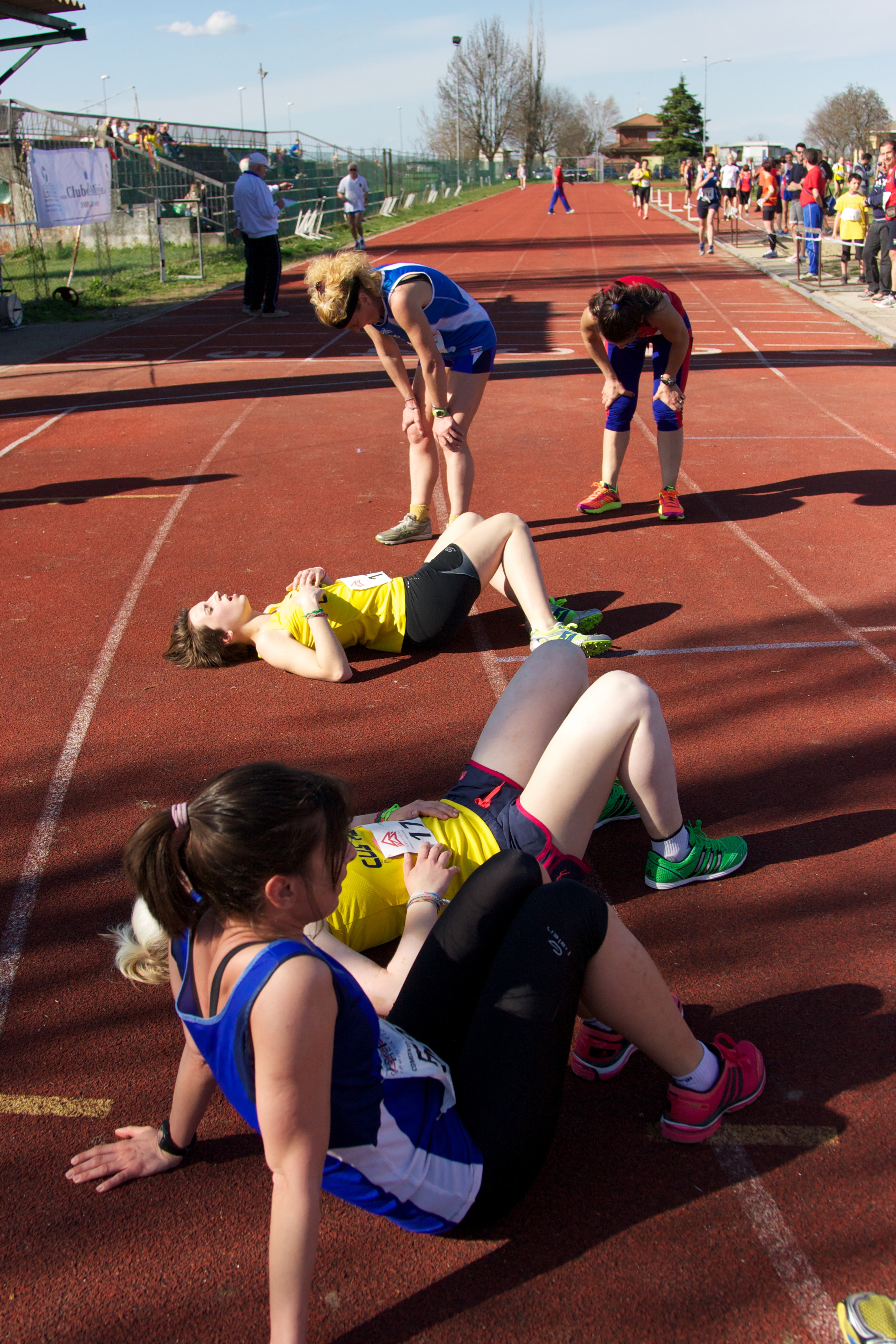4.1 Case Study: The Importance of Cells
Created by: CK-12/Adapted by Christine Miller

Case Study: More Than Just Tired
We all get tired sometimes, especially if we have been doing a lot of physical activity, like the athletes pictured in Figure 4.1.1. But for Jasmin (Figure 4.1.2), a 34-year-old former high school track star who is now a recreational runner, her tiredness was going far beyond what she thought should be normal for someone in generally good physical shape.

She was experiencing extreme fatigue after her runs, as well as muscle cramping, spasms, and an unusual sense of heaviness in her legs. At first, she just chalked it up to getting older, but her exhaustion and pain worsened to the point where the former athlete could no longer run for more than a few minutes at a time. She began to experience other unusual symptoms, such as blurry vision and vomiting for no apparent reason.
Concerned, Jasmin went to her doctor, who ran many tests and consulted with several specialists. After several months, she was finally diagnosed with a mitochondrial disease. Jasmin is surprised. She has an 8-year-old niece with a mitochondrial disease, but her niece’s symptoms started when she was very young, and they included seizures and learning disabilities. How can Jasmin have the same disease, but different symptoms? Why didn’t she have problems until adulthood, while her niece experienced symptoms at an early age? And what are mitochondria, anyway?
Chapter Overview: The Importance of Cells
As you will learn in this chapter, mitochondria are important structures within our cells. This chapter will describe cells, which are the basic unit of structure and function in all living organisms. Specifically, you will learn:
- How cells were discovered, their common structures, and the principles of cell theory.
- The importance of size and shape to the functions of cells.
- The differences between eukaryotic cells (such as those in humans and other animals) and prokaryotic cells (such as bacteria).
- The structures and functions of cell parts, including mitochondria, the plasma membrane, cytoplasm, cytoskeleton, nucleus, ribosomes, Golgi apparatus, endoplasmic reticulum, vesicles, and vacuoles.
- The processes of passive and active transport to move substances into and out of cells and help maintain homeostasis.
- How organisms obtain the energy needed for life, including how the sugar glucose is broken down to produce ATP through the processes of anaerobic and aerobic cellular respiration.
- The phases of the cell cycle, how cells divide through mitosis, and how cancer can result from unregulated cell division.
As you read this chapter, think about the following questions related to Jasmin’s disease:
- What are mitochondria? What is their structure and function, and where did they come from during evolution?
- Why are fatigue and “exercise intolerance” (such as Jasmin’s extreme exhaustion after running) common symptoms of mitochondrial diseases?
- Why do you think Jasmin has symptoms that affect so many different parts of her body, including her legs, eyes, and digestive system?
- Why do you think mitochondrial diseases can run in families like Jasmin’s?
Attributes
Figure 4.1.1
Difficult competition by Massimo Sartirana on Unsplash is used under the Unsplash License (https://unsplash.com/license).
Figure 4.1.2
Exhausted by Kevin Grieve on Unsplash is used under the Unsplash License (https://unsplash.com/license).
The smallest unit of life, consisting of at least a membrane, cytoplasm, and genetic material.

